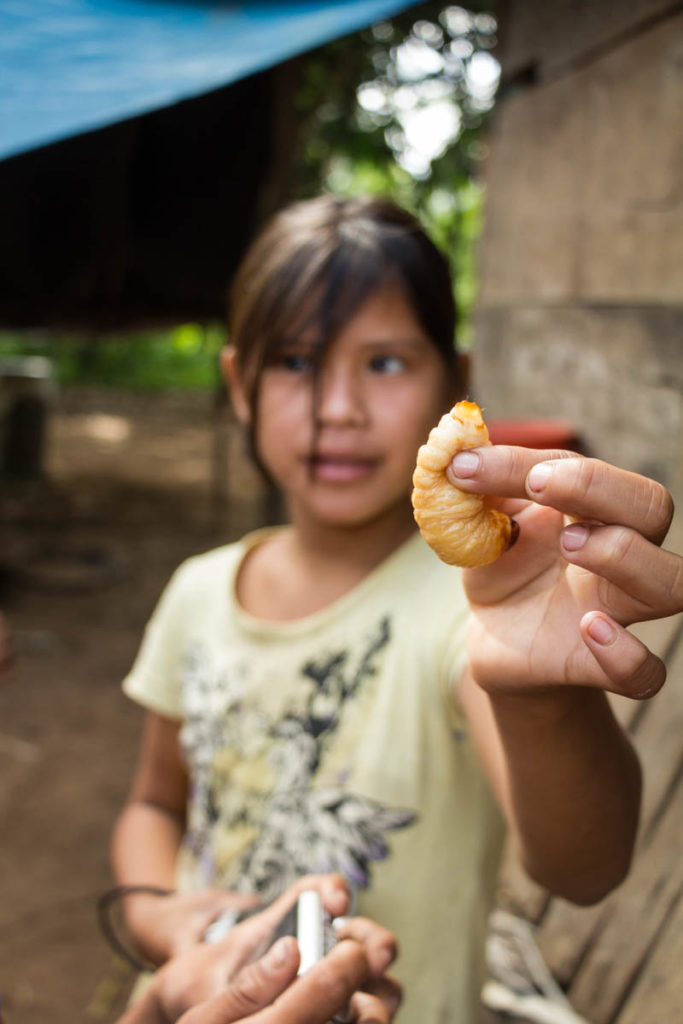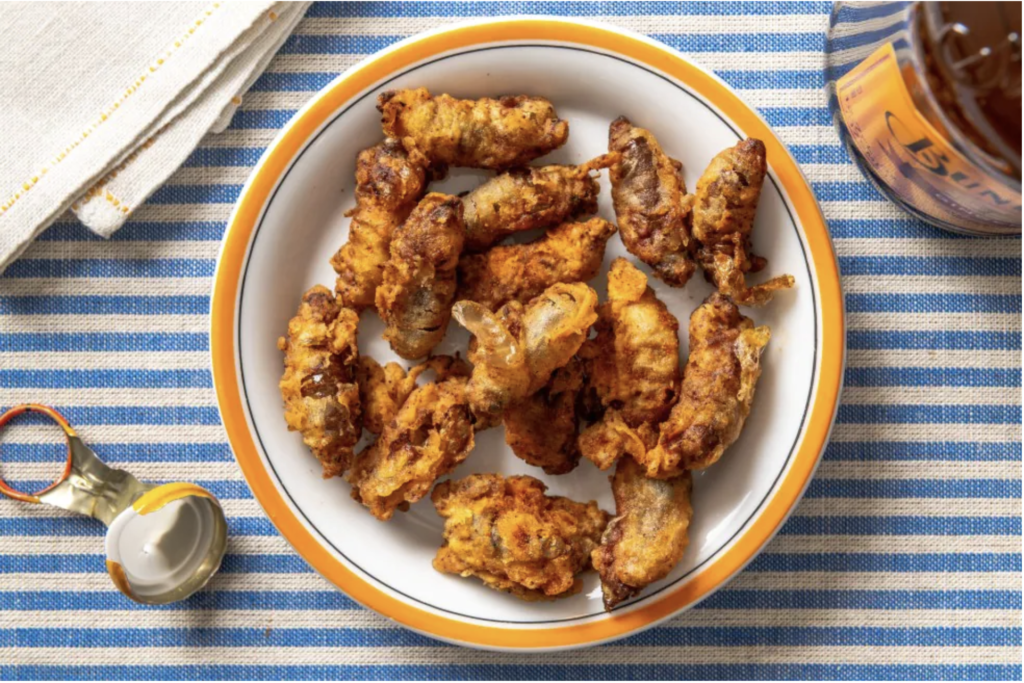
ACEER
ACEER Editorial Staff
Learn more about ACEER
July 7, 2021
A Taste of Summer
By Donovan Aldridge and Charles M. Sunday

If you have yet to hear the all-too-familiar drone that soundtracks each summer, you’ve surely picked up on some of the conversational buzz surrounding this year’s cicada emergence. Why the fuss, though? Isn’t their annual appearance to be expected? While it’s true that cicadas surface yearly, there is a subset of the species known as periodicals. These particular breeds of cicada will remain dormant underground for either 13 or 17 years (Discovery). One of such breeds, Brood X, is already enjoying its short moment in the Sun. Clustered in the Eastern United States and numbered in the billions, there could be an astonishing 1.4 million per acre in the most dense regions (Scientific American).
Considering the lengthy time between each periodical emergence and their short lifespan above ground, you’d be remiss not to savor the moment in some way. A quick snap with your phone could suffice, but the internet’s already full of photos and videos. Perhaps you ought to consider digesting the experience in a different manner—ingesting it! Before dismissively turning your nose up, (if you haven’t already) examine the possible causes of that reaction.
Entomophagy, the practice of eating insects, is widely embraced by ethnic and indigenous communities in parts of Asia, Africa, and Latin America as a cheap and sustainable source of protein (Cleveland Clinic).
In South America, insects such as ants, bees, tarantulas, and grasshoppers are eaten quite often—depending on the region (The World). In parts of Colombia, hormingus colinas (atta laevigatta) is one of the largest species of leaf-cutter ants found in the world! The consumption of colinas, (referred to as “big-bottomed” ants) has been dated back to Pre-Columbian times and played an important role in the diet of those indigenous groups (Jonathan Deutsch, book).
In the Peruvian Amazon, the larvae of the palm weevil (rhynchophorus palmarum) is consumed frequently. The Ese’Eja, an indigenous community based in the Madre de Dios region of southeastern Peru, eat the larva either raw or fried (Ese’Eja book). Since palm weevil larvae (or suri) are so abundant throughout the Amazon, it is likely that you will see it being served fried and skewered by street vendors (Atlas Obscura).

Xiomara Saavedra, These palm worms are called Suri and are found in the trunk of a palm tree and are used for food. If you mix the oil from these worms with the oil of a cayman, it can be used to treat a sore throat. found in the trunk of a palm tree and are used for food. If you mix the oil from these worms with the oil of a cayman, it can be used to treat a sore throat. found in the trunk of a palm tree and are used for food. If you mix the oil from these worms with the oil of a cayman, it can be used to treat a sore throat. Xiomara Yojaje
“Okay, it may not be dangerous but it’s gross.” you retort. Perhaps, but liken it to how you might approach a traditional meal. You’re not going to eat a plain chicken breast, right? No! You’re going to dress it up with seasoning and marinade it!
If curiosity can’t spark an interest to try insect-based meals, maybe their sustainability can. With factory farming contributing up to 14.5% of all human-based emissions—according to the United Nations Food and Agriculture Organization—a change in diet provides a direct and autonomous way for an individual to lessen their contribution to the looming, existential threat of climate change (Inside Climate News). Carbon dioxide (CO₂), which makes up to three-quarters of greenhouse gas emissions, is especially prevalent in food production (National Geographic). Just one cow (beef is the least-sustainable meat) can produce 7.4 lbs of CO₂—comparable to driving nearly 10 miles! (Scientific American)
Advocates for edible insect consumption promote the nutritional value; bugs are often a sustainable and healthy protein source (Washington Post). As mentioned before, cicadas and other insects are eaten regularly among cultures across the globe. The premise of introducing insects into the Western diet to help save the world could appear daunting; it requires a drastic shift in our collective attitude toward bugs. This change is nothing to fear or loathe, however. Liken it to an analogy with technology: Rarely is a new innovation instantly ubiquitous—it’s phased in over time (i.e. electric cars). So, you don’t have to eat a full plate of cicadas with a side of crickets tonight; entomophagy can crawl its way into our diets…
If you’re feeling adventurous and want to expand your bug palette, eating the cicadas of Brood X is a great way to start (if they are still around). However, since their lifespan is only several weeks, there is an abundance of insect recipes that don’t include cicadas that you could enjoy!
Bibliography
Cleveland Clinic. “Are Cicadas Safe to Eat?” Cleveland Clinic, 3 June 2021, https://health.clevelandclinic.org/are-cicadas-safe-to-eat/. Accessed 22 June 2021.
Deutsch, Jonathan, and Natalya Murakhver, eds. They Eat That? A Cultural Encyclopedia of Weird and Exotic Food from around the World. California, US: ABC-Clio, 2012. Digital file.
Ese’Eja, Jon Cox, and Rocío Martínez. “Foraging.” In ANCESTRAL LANDS OF THE ESE’EJA THE TRUE PEOPLE, 32. Amazon Center for Environmental Education and Research, n.d. Accessed June 22, 2021.
Gustin, Georgina. “Factory Farms Put Climate at Risk, Experts Say in Urging Health Officials to Speak Out.” Inside Climate News, 23 May 2017, https://insideclimatenews.org/news/23052017/factory-farms-cafos-threaten-climate-change-world-heath-organization/. Accessed 23 June 2021.
Hamer, Ashley. “If Cicadas Come Out Once Every 17 Years, Why Do You See Them Every Summer?” Discovery, 1 August 2019, https://www.discovery.com/nature/Cicadas-come-out-summer. Accessed 22 June 2021.
Nunez, Christina. “Carbon dioxide levels are at a record high. Here’s what you need to know.” National Geographic, 13 May 2019, https://www.nationalgeographic.com/environment/article/greenhouse-gases?loggedin=true. Accessed 23 June 2021.
O’Brien, Sara. “Suri Grubs Palm weevil larvae make succulent street snacks in the Amazon.” Atlas Obscura (blog). Accessed June 25, 2021. https://www.atlasobscura.com/foods/suri-grubs-peru
Scientific American. “How Meat Contributes to Global Warming.” Scientific American, https://www.scientificamerican.com/slideshow/the-greenhouse-hamburger/#. Accessed 23 June 2021.
Sonde, Kira. “Want to try cicadas? Give the Brood X insects this spicy popcorn treatment.” Washington Post, May 19, 2021. Accessed June 15, 2021. https://www.washingtonpost.com/food/2021/05/19/spicy-popcorn-cicadas-recipe/.
Tegel, Simeon. “5 edible Latin American bugs.” The World, February 22, 2015. Accessed June 26, 2021. https://www.pri.org/stories/2015-02-22/5-edible-latin-american-bugs.
Wong, Kate, and Cherie Sinnen. “Brood X Cicadas Are Emerging at Last.” Scientific American, 10 May 2021, https://www.scientificamerican.com/article/brood-x-cicadas-are-emerging-at-last1/. Accessed 22 June 2021.




